Rearward-facing Baby Seats
Babies and infants need to be carried in rearward-facing baby seats. This reduces the risk of death or injury in a crash by 90 per cent compared with being unrestrained.
Rearward-facing seats provide greater protection for the baby's head, neck and spine than forward-facing seats. So, it is best to keep your baby in a rearward-facing seat for as long as possible. Only move them to a forward-facing seat once they can sit up unaided and they have exceeded the maximum weight for the seat or they are too tall for the seat, this is usually when the top of the child's head is above the top of the seat. Or, you could consider using a larger extended rearward facing seat, where children can be rearward facing until they reach 18kg or even 25kg.
Rearward-facing baby seats have an energy absorbing interior, and an integral five point harness (some have a three-point harness) to hold the baby in place snugly. Take time to get your baby comfortably strapped in and to make sure the harness is correctly adjusted. The top of the harness should be about 2cm below your baby's shoulder. It should be quite tight, so that only one or two fingers can fit between the baby's chest and the harness. The harness buckle should not rest over the child's tummy. Clothing can affect how snugly the harness fits, so check it every journey.
If using an i-size seat, keep your baby in the seat, rearward-facing, until they are at least 15 months old.
Rearward-facing seats can be used in the front or rear of the car, but it is safer to put them in the rear. DO NOT put them in the front passenger seat if there is an active passenger airbag.
- Seat Belt Wearing During Pregnancy
- Carrying Very Young, Premature or Low Birth Weight Babies
- Choosing and Using Rearward Facing Child Car Seats
- Extended Rearward-Facing Child Car Seats
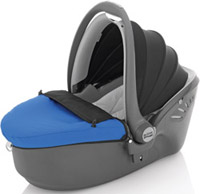
Types of rearward-facing child seats:
Group 0 for babies up to 10 kg (22 lbs) roughly from birth to 6 months
Group 0 seats allow the baby to lie flat, and are particularly suitable for new born babies and premature or low birth weight babies. They are not very common because most people prefer to use rearward-facing Group 0+ seats, which will last a bit longer because they are suitable for children up to 13kg (roughly 12-15 months).

Group 0+ for babies up to 13kg (29lbs) roughly from birth to 12-15 months
Group 0+ seats provide greater protection for the baby's head, neck and spine, and side impact protection, than forward-facing seats.
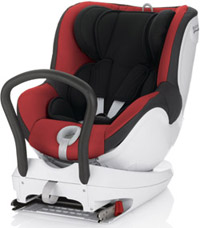
Group 0+ & 1 for babies and toddlers up to 18kg, roughly from birth to 4 years
Group 0+ & 1 seats allow you to keep your child rearward-facing until they are 18 kg in weight, which is roughly four years old. Some can be turned into forward-facing seats when the child has reached 13 kg in weight, or they can continue to be used rearward-facing.
These larger rearward-facing seats are becoming more readily available in the UK. They offer more protection to the child in a crash because they are rearward-facing.
Group 1 for babies and toddlers from 9kg to 18kg, roughly from 9 months up to 4 years
Group 1 seats allow you to keep your child rearward-facing until they are 18 kg in weight, which is roughly four years old. Some can be turned into forward-facing seats when the child has reached 13 kg in weight, or they can continue to be used rearward-facing. These seats are suitable for children weighing 9kg upwards.
These larger rearward-facing seats are becoming more readily available in the UK. They offer more protection to the child in a crash because they are rearward-facing.
Group 1 & 2 for babies and toddlers from 9kg to 25kg, roughly from 9 months up to 6 years
Group 1 & 2 seats allow you to keep your child rearward-facing until they are 25kg in weight, which is roughly six years old. Some can be turned into forward-facing seats when the child has reached 13 kg in weight, or they can continue to be used rearward-facing. These seats are suitable for children weighing 9kg upwards.
These larger rearward-facing seats are becoming more readily available in the UK. They offer more protection to the child in a crash because they are rearward-facing.
Fitting rearward-facing seats
As with all child car restraints, follow the manufacturer's recommendations on how to fit and use them, or visit our Child Car Seat Fitting and Compatibility page to access manufacturer video guides on how to fit your child car seat.
Depending on the type of seat, it will be fitted with the car's seat belts or into Isofix fitting points built into the car, if it is an Isofix or i-size seat. The child seat may fit onto a base rather than directly onto the car's seat, in which case the base is fitted with the car's seat belts or into its Isofix points, and the child seat fits onto the base.
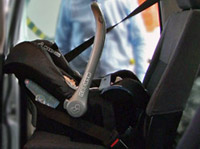
Seat fitted with the car's seat belts
Rearward-facing seats that are fitted with the car's seat belts that adhere to the R44 regulation have blue guides through which the seat belt must be threaded to secure the seat. If your seat adheres to the new i-Size regulation, these guides may be green. On some seats, the handle is also used to help secure the seat, so it is important to position the handle as described in the instructions. The correct seat belt routes and the position of the handle will be shown on labels on the side of the seat.
Isofix rearward-facing seats
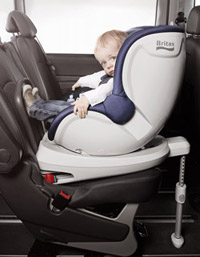
Rearward-facing Isofix seats do not use the car's seat belts. They have mounts built into them that slot into the Isofix anchorage points that are built into the car. They will also have either a support foot that needs to be extended to the floor of the car or a top tether that fixes to the top tether points behind the car seat.
Check whether your Isofix child seat is approved for your car by contacting your car manufacturer and/or the child seat manufacturer; many have a list on their website that shows which seats are approved for which cars.
i-size rearward-facing seats
Rearward-facing i-size seats will be fit into the Isofix anchorage points that are built into the car. However, some seats will also have the option of fitting using the vehicle seatbelt. Follow the manufacturer's instructions to find out how to fit the seat correctly.
Check if the seat is approved for your car. Contact your car manufacturer and/or the child seat manufacturer; many have a list on their website that shows which seats are approved for which cars.
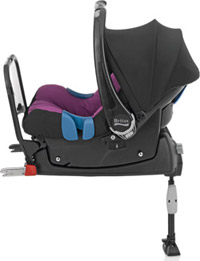
Rearward-facing seats with bases
Some seats have a separate base that is fitted with the car's seat belt and/or into the Isofix points, and the seat just clicks into the correct position on the base. The base can be left permanently in the car, which makes putting the seat in and taking it out of the car quicker and easier. If the base is fitted with the car's seat belts, thread the seat belt through the blue or green guides (not the red ones).
Seat Belt Wearing During Pregnancy
Pregnant women must wear seat belts by law when travelling in the front or rear seats of a car. Pregnancy does not automatically provide exemption from the requirement to wear a seat belt.

Mother and unborn child are both safer in a collision if the mother is wearing a lap and diagonal seat belt correctly.
The safest way for pregnant women to wear a seat belt is to:
- Place the diagonal strap between the breasts (over the breastbone) with the strap resting over the shoulder, not the neck
- Place the lap belt flat on the thighs, fitting comfortably beneath the enlarged abdomen, and over the pelvis not the bump
- Keep the belt as tight as possible
In this way, the forces involved in an impact can be absorbed by the body's frame.
Avoid using a lap-only seat belt as they may cause injuries to unborn children in a collision. Always wear a three-point seat belt.
Carrying Very Young, Premature or Low Birth Weight Babies
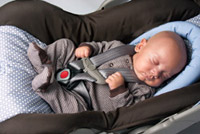
Recent research has found that babies under four weeks should not travel in car seats for more than 30 minutes because they may develop breathing difficulties1.
Previous USA research raised concerns that some premature and low-birth weight babies may be susceptible to breathing problems if they stay in a baby seat for long periods. They found that some newborn babies developed breathing problems after one hour in a baby seat and some premature babies stopped breathing for a short period. The main concern was with babies who have apnea (stopping breathing), bradycardia (slow heart rate), or desaturation (low oxygen levels), and suggested that these babies may be safer in a lie-flat baby seat (Group 0).
Our advice for parents with very young babies, especially premature and low birth weight babies, is to ask the hospital to assess whether it is safe for your baby to travel in a baby seat before they are discharged (many hospitals routinely do this assessment).
When taking a baby in a car, always use an approved rearward-facing baby seat that is properly fitted, preferably in the rear of the car, but:
-
Keep car travel to a minimum in the first few months of a baby’s life
-
Avoid keeping a young baby in a baby seat for longer than 30 minutes
-
Put the baby seat in the rear of the car, but never leave the child unattended in the seat.
-
Try to have someone else do the driving, so you can sit next to the baby to keep an eye on him or her, or have someone else sit next to them
-
Only use the baby seat in the car and not for feeding the baby or letting them sleep at home
-
Recline the baby seat as much as possible when in the car (making sure you follow the manufacturer's instructions for fitting and using it)
-
If in any doubt, consult the hospital or your GP
1 Arya et al. (2014) 'Effect on Cardiorespiratory Function in Term and Preterm Infants Sitting in a Car Safety Seat, in a Simulated Moving Vehicle (Pilot Study)', Arch Dis Child, 99(1): A1-A212.
Photos courtesy of Britax and RECARO Child Safety Ltd
